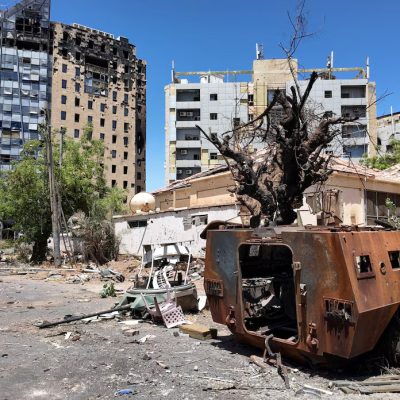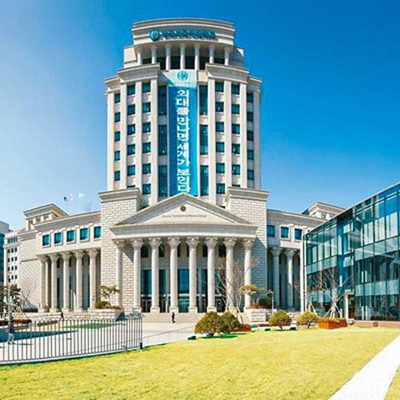Dr Samantha Newbery, University of Salford
Two British soldiers appeared in court in late September, charged with membership of National Action, a banned far-right terrorist group. Along with another man, the two soldiers will face trial in January 2018. However, allegations of involvement by members of the British armed forces with terrorist groups have been made before, in Northern Ireland in the 1970s.
There are clear differences between far-right extremist groups today and the Loyalist paramilitary groups who used violent methods during “the troubles” in an effort to keep Northern Ireland within the UK. Yet it is the volume and variety of links between the soldiers in the UDR and Loyalist paramilitaries, coupled with warnings not to underestimate the threat from the extreme far-right, that the past can illuminate.
Much of our knowledge of the subversive activities of the British army’s Ulster Defence Regiment (UDR), an infantry regiment based in Northern Ireland, comes from a report held by The National Archives. Research this author has recently carried out there has confirmed that the report was authored by British military intelligence in August 1973. The evidence it presents is incomplete but suggests that some UDR members went so far as to be involved with terrorist acts perpetrated by Loyalist paramilitaries.
Some of these acts, along with other alleged links between the armed forces or police and terrorist groups who were active in Northern Ireland, remain the subject of ongoing legal proceedings.
Motives for membership
The UDR was established in 1970, one year after the British army was deployed to Northern Ireland to help the police force maintain law and order. It was a part-time regiment comprised of members recruited from Northern Ireland. Evidence of links between some of its members and Loyalist paramilitaries concerned both of the two biggest paramilitary groups: the Ulster Defence Association (UDA) and the Ulster Volunteer Force (UVF).
Remarkably, when the UDA was at its peak in the early 1970s it had an estimated 40-50,000 members. Although present day commentators argue that it was a paramilitary organisation throughout its history, the UDA was not proscribed as a terrorist organisation until 1992, perhaps for a combination of political and practical reasons related to its sheer size.
The impetus for joint membership of the armed forces and terrorist or paramilitary groups can come either from an individual soldier, or from an extremist group that actively seeks to recruit them. A paramilitary or terrorist group can also seek to infiltrate its own members into the armed forces.
This was attempted in the early 1970s in Northern Ireland: in a three-month period in mid-1973 nearly 30% of the 99 applications to join the UDR were rejected because of evidence the person was linked to paramilitary organisations.
Weapons and training
Paramilitary organisations can benefit from the support of individuals in the armed forces regardless of whether those soldiers are formal members of those paramilitary groups. The potential benefits chiefly include the provision of training, of information, and of arms and ammunition. In Northern Ireland, the report held by the National Archives notes how some UDR soldiers gave weapons training to members of the UVF – an organisation proscribed as terrorist in 1966 – and to the UDA. The army struggled to identify the scale of this training and therefore its impact on terrorist activities.
The authors of the report believed that the majority of weapons stolen from the UDR in 1972-3 were in the hands of Loyalist paramilitaries. The Ministry of Defence admitted that although less than four per cent of people belonging to the UDR in 1973 were Catholic – and might therefore have had sympathies with Republican extremist groups such as the IRA – some of the stolen weapons may have been in the IRA’s possession. Weapons were reported stolen from armouries, from soldiers on duty and while in the possession of off-duty soldiers.
According to the report, of the 190 UDR weapons reported stolen in 1972, 106 were taken during a raid at a camp in Lurgan, County Armagh. Most of these weapons were quickly recovered, though the authorities suspected that one or more members of the UDR had helped Loyalist paramilitaries to plan or carry out this raid. One of the sub-machine guns that was recovered later had, in the intervening months, been used in a murder and a series of attempted murders by suspected Loyalist terrorists.
The report also details how 14 self-loading rifles and ammunition were stolen in a raid on the headquarters of 10 Battalion UDR in Belfast in October 1972. The authors claim this was carried out by people who had information about the guard arrangements at this facility. These examples demonstrate the importance of carefully controlling access not only to arms and ammunition, but to information. Precautions of this sort are already in place – perhaps in part due to lessons learned from Northern Ireland – but now might be a good time to review them.
As the UDR examples illustrate, links between members of the armed forces and extremist organisations can be inspired by common interests. A desire to work against republican terrorists who wanted Northern Ireland to leave the UK was an interest held by many members of the UDR and Loyalist paramilitaries. This is perhaps the most important lesson to be learnt and the most difficult to address.
Originally published on The Conversation, 12 October 2017, https://theconversation.com/what-northern-irelands-past-reveals-about-soldiers-with-mixed-allegiances-83683





